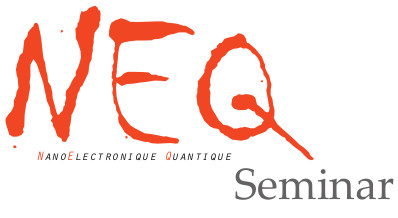- Accueil
- Institut Néel
- Équipes de recherche
- Pôles & Services techniques
- Travailler à l’institut
- Partenariats
- Actualités
- Agenda
- Annuaire

Zoom link : https://univ-grenoble-alpes-fr.zoom.us/j/91808901596?pwd=UWZ2cml2N1VBOEZBenk0d3RJek9rdz09
Résumé/Abstract : When electrons populate a flat band their kinetic energy becomes negligible, forcing them to organize in exotic many-body states to minimize their Coulomb energy. The zeroth Landau level of graphene under a magnetic field is a particularly interesting strongly interacting flat band because interelectron interactions are predicted to induce a rich variety of broken-symmetry states with distinct topological and lattice-scale orders [1]. Evidence for these states stems mostly from indirect transport experiments that suggest that broken-symmetry states are tunable by boosting the Zeeman energy [2] or by dielectric screening of the Coulomb interaction [3]. However, confirming the existence of these ground states requires a direct visualization of their lattice-scale orders. In this talk I will show that we have been able to image three distinct broken-symmetry phases in graphene using scanning tunnelling spectroscopy [4]. We explored the phase diagram by tuning the screening of the Coulomb interaction by a low- or high-dielectric-constant environment, and with a magnetic field. In the unscreened case, we find a Kekulé bond order. Under dielectric screening, a sublattice- unpolarized ground state emerges at low magnetic fields, and transits to a charge-density-wave order with partial sublattice polarization at higher magnetic fields. The Kekulé and charge-density-wave orders furthermore coexist with additional, secondary lattice-scale orders that enrich the phase diagram beyond current theory predictions.
Ref.: [1] Kharitonov, Phys. Rev. B 85, 155439 (2012).
[2] Young et al., Nature 505, 528–532 (2014).
[3] Veyrat et al., Science 367, 781–786 (2020).
[4] Coissard et al., Nature 605, 51-56 (2022).
